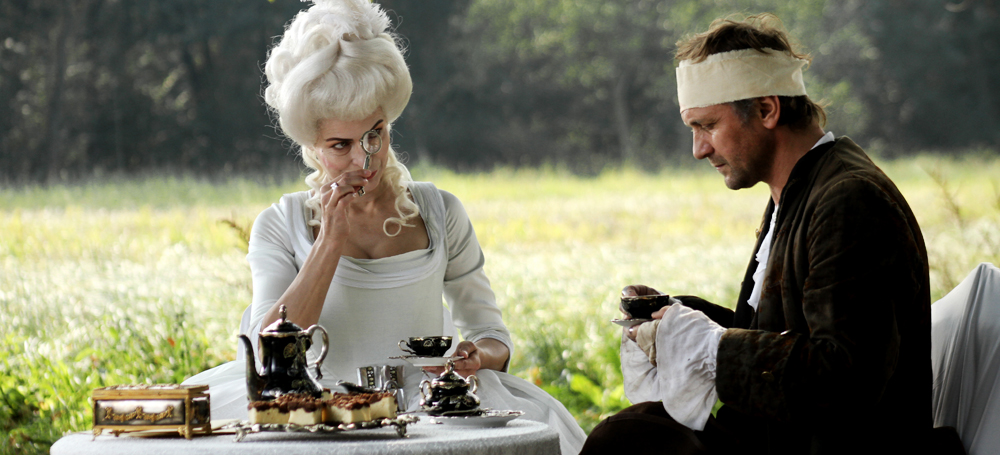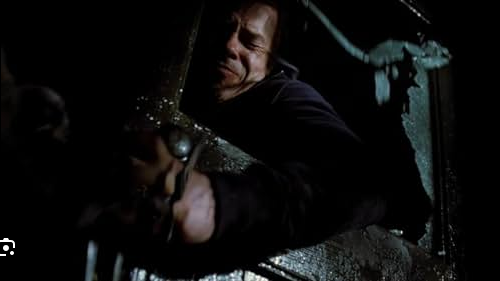
Introduction: "Dragon" (2011), directed by Peter Chan, is a mesmerizing martial arts epic that combines breathtaking action sequences with a compelling narrative set in ancient China. Filled with intrigue, betrayal, and redemption, this film takes viewers on a thrilling journey through a world of honor, vengeance, and the unbreakable bonds of brotherhood.
The Plot Unraveled: Set in a small village plagued by a series of brutal murders, "Dragon" follows Liu Jin-xi (played by Donnie Yen), a humble papermaker with a mysterious past. When Liu single-handedly defeats a group of bandits who attack the village, he unwittingly attracts the attention of Detective Xu Bai-jiu (portrayed by Takeshi Kaneshiro), who suspects that there is more to Liu than meets the eye. As Xu delves deeper into Liu's past, he uncovers a web of secrets and lies that threatens to engulf them both in a deadly game of cat and mouse.
A Symphony of Action: At the heart of "Dragon" lies its breathtaking action sequences, choreographed with precision and flair by martial arts maestro Donnie Yen. From the pulse-pounding fight scenes to the gravity-defying stunts, every moment is a testament to Yen's skill and expertise as both an actor and a martial artist. The film's action sequences are not only visually stunning but also serve to advance the plot and deepen the characters' motivations, making them integral to the storytelling process.
Emotional Depth and Complexity: Beyond its jaw-dropping action, "Dragon" offers viewers a compelling narrative filled with emotional depth and complexity. As Liu Jin-xi grapples with his past and struggles to protect his family from harm, he is forced to confront difficult truths about his own identity and the nature of justice. Detective Xu Bai-jiu, meanwhile, finds himself torn between his duty to uphold the law and his growing admiration for Liu's courage and integrity. Their evolving relationship adds layers of nuance to the story, as they navigate the murky waters of honor, loyalty, and sacrifice.
Visual Splendor and Cinematic Grandeur: Visually, "Dragon" is a feast for the eyes, with stunning cinematography, lavish set design, and breathtaking landscapes that transport viewers to a world of ancient China. Director Peter Chan captures the beauty and grandeur of the era with meticulous attention to detail, creating a rich tapestry of sights and sounds that immerses viewers in the film's vibrant and evocative world.
Critical Acclaim and Audience Reception: Upon its release, "Dragon" received widespread critical acclaim for its thrilling action, compelling storytelling, and standout performances. Critics praised Donnie Yen's electrifying performance and Peter Chan's skillful direction, hailing the film as a triumph of the martial arts genre. Audiences were similarly captivated by the film's epic scope and emotional depth, making it a box office success and earning it a dedicated fanbase around the world.
Conclusion: In conclusion, "Dragon" (2011) is a riveting martial arts epic that combines thrilling action with a compelling narrative to create an unforgettable cinematic experience. With its breathtaking fight scenes, emotional depth, and stunning visuals, the film offers something for viewers of all tastes and backgrounds. Whether you're a fan of martial arts cinema or simply appreciate a well-told story, "Dragon" is a must-watch film that will leave you on the edge of your seat from start to finish.
Embark on a thrilling journey through ancient China with "Dragon" (2011), a mesmerizing martial arts epic that will leave you breathless with its jaw-dropping action and compelling storytelling. With its standout performances, stunning visuals, and emotional depth, this film is sure to captivate audiences of all ages. So, buckle up and get ready for an adrenaline-fueled adventure that will keep you on the edge of your seat until the very end.


